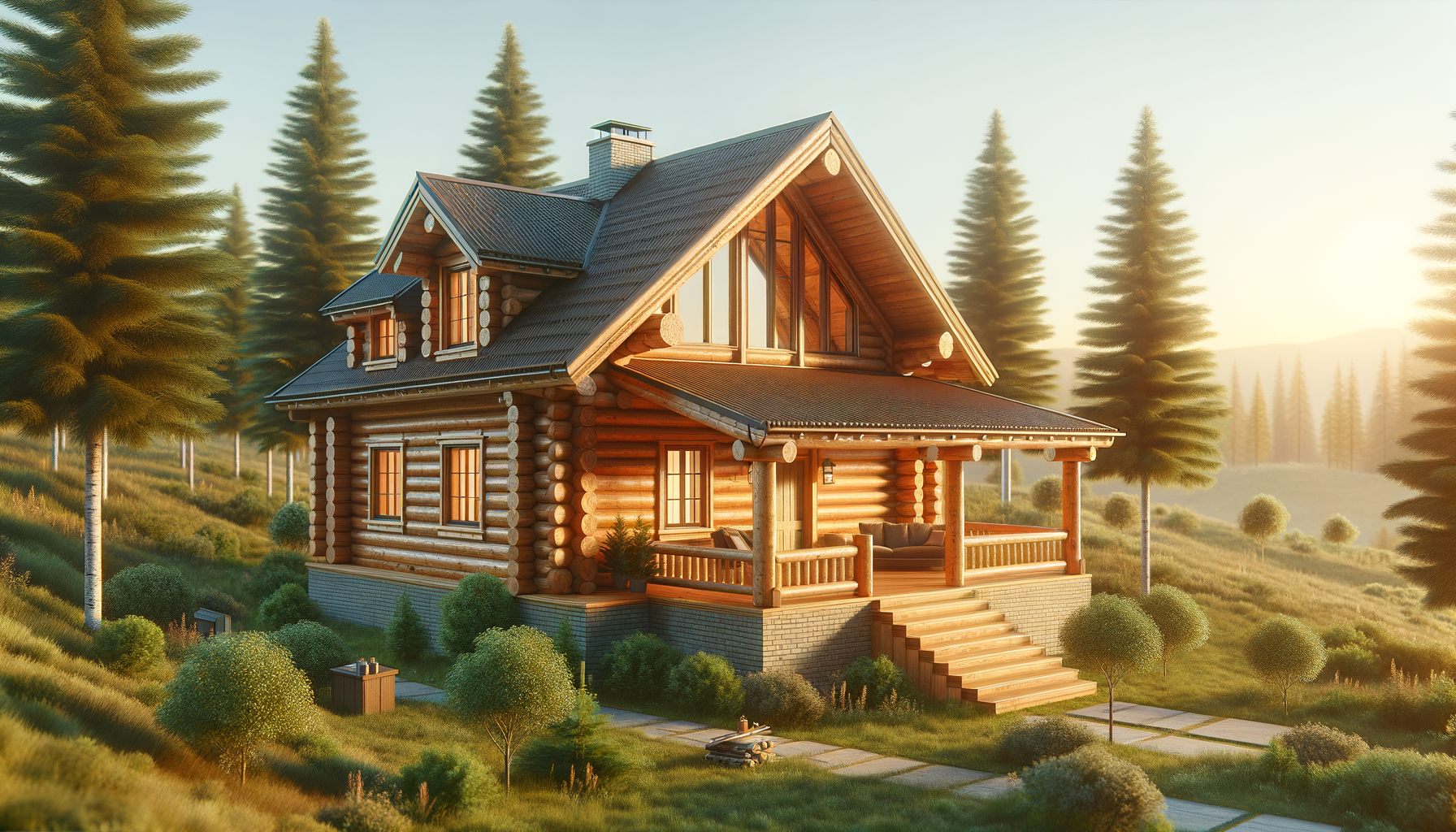Understanding Log Cabin Kits: A Modern Solution to Rustic Living
Log cabin kits offer a streamlined approach to constructing your own rustic retreat, without the complexities of traditional building methods. These kits provide all the necessary materials and plans to assemble a cabin, making them an attractive option for those who dream of a cozy, woodsy escape. The appeal of log cabin kits lies in their convenience and cost-effectiveness. With a range of options available, from small weekend getaways to larger family homes, these kits cater to diverse needs and budgets.
One of the key advantages of log cabin kits is the reduction in construction time. Traditional log cabins require sourcing materials, hiring skilled labor, and enduring lengthy construction periods. In contrast, kits come with pre-cut logs and detailed instructions, allowing even novice builders to complete their cabin in a fraction of the time. This efficiency not only saves time but also reduces labor costs significantly.
Moreover, log cabin kits offer flexibility in design. Many manufacturers provide customizable options, allowing buyers to tailor their cabins to suit personal preferences and specific site conditions. This adaptability ensures that each cabin is unique, reflecting the owner’s style and needs. As a result, log cabin kits have become a popular choice for those seeking a blend of rustic charm and modern convenience.
Choosing the Right Log Cabin Kit: Factors to Consider
Selecting the right log cabin kit involves careful consideration of several factors to ensure that the final product meets your expectations and needs. The first decision revolves around the size and layout of the cabin. Consider how the space will be used—whether as a weekend retreat, a full-time residence, or a rental property. This will influence the number of rooms, the size of common areas, and the overall footprint of the cabin.
Another crucial factor is the type of wood used in the kit. Different wood species offer varying levels of durability, insulation, and aesthetic appeal. For instance, cedar is renowned for its natural resistance to decay and insects, while pine is valued for its affordability and ease of handling. Understanding the properties of each wood type will help you make an informed decision that balances cost with longevity.
Additionally, consider the location and climate where the cabin will be built. Insulation and weatherproofing are vital to ensuring comfort and energy efficiency. Some kits include additional features such as double-glazed windows and enhanced insulation, which are particularly beneficial in colder climates. By evaluating these aspects, you can select a log cabin kit that aligns with your environmental and lifestyle needs.
The Cost of Log Cabin Kits: Budgeting for Your Dream Home
When planning to purchase a log cabin kit, understanding the cost implications is essential to ensure your project remains within budget. Log cabin kits vary widely in price, typically ranging from $4,000 to $50,000 or more. The price is influenced by several factors, including the size of the cabin, the type of wood used, and any additional features or customization options.
It’s important to remember that the kit price often includes only the basic structure. Additional costs such as site preparation, foundation work, plumbing, and electrical installations should be factored into your budget. These elements can significantly impact the overall cost of the project, so it’s crucial to obtain detailed estimates for each component.
Financing options are available for those who require assistance in managing the upfront costs. Many manufacturers offer flexible payment plans or partnerships with financial institutions to provide loans specifically for log cabin projects. By exploring these options, you can make your dream of owning a log cabin more financially accessible.
Building Your Log Cabin: A Step-by-Step Guide
Embarking on the journey of building your log cabin is an exciting endeavor that combines creativity and hands-on work. The process begins with selecting the ideal site for your cabin, taking into account factors such as access to utilities, sunlight, and views. Once the location is chosen, site preparation involves clearing the land and laying the foundation. This stage is crucial for ensuring the stability and longevity of the cabin.
With the foundation in place, the next step is assembling the log cabin kit. Following the manufacturer’s instructions, you will erect the walls, install the roof, and fit the windows and doors. This stage requires attention to detail and patience, as precision is key to achieving a well-constructed cabin. For those less confident in their building skills, hiring a professional contractor can provide peace of mind and ensure quality workmanship.
After the main structure is complete, focus shifts to the interior. This includes installing plumbing and electrical systems, as well as finishing touches such as flooring, cabinetry, and paint. Personalizing the interior allows you to create a space that reflects your style and meets your practical needs. Throughout the building process, maintaining clear communication with suppliers and contractors is essential to address any challenges promptly and keep the project on track.
Enhancing Your Log Cabin Experience: Tips and Ideas
Once your log cabin is built, enhancing the experience involves adding personal touches and practical features that elevate comfort and enjoyment. Consider incorporating sustainable practices, such as solar panels or rainwater collection systems, to reduce environmental impact and operating costs. These eco-friendly additions not only benefit the planet but also enhance the cabin’s appeal and functionality.
Landscaping around your cabin can also significantly impact the overall ambiance. Planting native trees and shrubs not only beautifies the surroundings but also provides natural privacy and windbreaks. Creating outdoor living spaces, such as decks or patios, extends the usable area of the cabin and offers a perfect spot for relaxation and entertaining.
For those who intend to use the cabin as a rental property, adding amenities like a hot tub, fire pit, or outdoor kitchen can attract more visitors and increase rental income. By thoughtfully enhancing your log cabin, you can create a welcoming retreat that offers both comfort and a connection to nature.



Leave a Reply